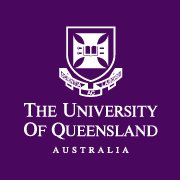Full description
This dataset accompanies the analysis presented in "The unrealized potential of agroforestry for an emissions-intensive agricultural commodity" and consists of two complementary components: 1. Ground-truth and drone-based shade mapping data. This component includes raw and processed outputs from drone surveys conducted over 827 cocoa farms in Ghana and Côte d’Ivoire during 2021–2022. In Ghana, a stratified sampling design was used to collect data from 698 farms, supplemented by 69 high-shade farms to capture the upper range of shade classes. In Côte d’Ivoire, 95 farms were surveyed in collaboration with the Sustainable Cocoa Initiative Support Programme (SCISP) and the Sustainable Agricultural Supply Chains Initiative (SASI, formerly INA) of the German Development Agency (GIZ). The dataset includes: • Raw drone imagery (JPEG) • Map extracts such as orthomosaics, digital elevation models (DEM), digital terrain models (DTM), vegetation height maps, and point clouds (Ghana only) • Digitized polygons of unshaded cocoa areas. These data support analysis of shade-tree cover, vegetation structure, and land-use planning in cocoa-growing regions. Users should note that point clouds are not available for Côte d’Ivoire flights, and data quality may vary between campaigns. 2. Climate mitigation potential analysis. This component provides the code and processed data used to estimate aboveground carbon stocks and simulate shade tree scenarios in cocoa agroforestry systems. It includes: • A cleaned 50 × 50 m dataset combining biomass and shade cover • A fitted Bayesian regression model (BRMS) • An R script (provided in the code/ folder) that fits the model to a 10% sample of pixels with ≤40% shade, calculates aboveground carbon under different agroforestry adoption scenarios, and reproduces key figures from the manuscript.Issued: 2025
Subjects
Agricultural, Veterinary and Food Sciences |
Agriculture, Land and Farm Management |
Agroforestry |
Deep Learning |
Forestry Sciences |
Information and Computing Sciences |
Machine Learning |
Sustainable Agricultural Development |
eng |
User Contributed Tags
Login to tag this record with meaningful keywords to make it easier to discover
Other Information
Research Data Collections
local : UQ:289097
Identifiers
- Local : RDM ID: abf4b441-07f4-4545-b59d-7f295858e826
- DOI : 10.48610/DDA018C



